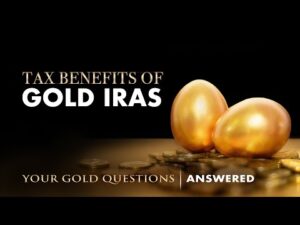Roth IRAs allow you to make contributions using after-tax dollars so that you don't have to pay taxes when you withdraw the money. You can withdraw your earnings once you turn 59-1/2 years old, provided you have held the account for at least 5 years.
What is a Roth IRA?
Most people open a Roth IRA via an investment company or brokerage agent. However, you can open an account directly with a bank or credit union or any other qualified financial institution. Although there is no minimum age requirement for opening a Roth IRA account, income and contribution limits are. For more information on Roth IRA contribution and income limits, see the table below.
You can make Roth IRA contributions at any time during the year, and until the tax filing date of the next year. You have, for example, until April 18, 2023 to make contributions in the tax year 2022. You have a variety of options to make Roth IRA contribution. Regular cash contributions are the most popular method. You can also make contributions via rollovers, transfers, and conversions.
You can also choose how your funds will be invested. You can choose to invest in stocks, bonds or mutual funds. A financial advisor can help you decide which investment options would be best for you.
You can withdraw your Roth IRA contributions tax-free at anytime. You could be subject to tax penalties if any of your earnings are withdrawn before the age of 59, or if the account has been open for more than 5 years.
Let's take, for example, that you are 35 years old and have contributed $3,000 annually to Roth IRAs over the past 7 years. A total of $21,000 ($3,000×7) can be withdrawn at any time, without any taxes or penalty. You may be subject to a 10% tax penalty if you withdraw more than your $21,000 contribution. You may be able to avoid this tax penalty by completing certain qualifying events such as buying a house, paying for higher education or becoming permanently disabled.
It is important to fully understand the advantages and drawbacks of Roth IRA investing before you make any decisions. These details will help you determine if this is the right opportunity for you.
Roth IRA Benefits
There are many benefits to investing in a Roth IRA.
- After Tax Contributions: Roth IRAs let you make after-tax contributions, which is not possible with traditional IRAs. If you expect to be in a higher tax bracket in the future, this can be a great benefit.
- Tax-Free Growth – You can also enjoy tax-free income by making post-tax contributions into your Roth IRA. You don't have to pay taxes on earnings earned in your account, unless you withdraw them before you turn 59-1/2 or if your account has been open for less than five years.
- No Tax on Withdrawal of Contributions – Since you pay taxes on contributions before you make them, withdrawals after the age of 59 and a quarter years are exempt from tax.
- Multiple Contributions – Regulations allow you to make contributions to both a Roth IRA or a 401k through an employer. Although you can't contribute more than your maximum, both accounts can help expand your investment portfolio.
- No Minimum Distributions – One of the greatest advantages to investing in a Roth IRA account is that there are never minimum distribution requirements. Roth IRA accounts can be left indefinitely and you can even give it as an inheritance.
- Roth IRA There is no inheritance tax for Roth IRA . A Roth IRA that has been passed on through an inheritance allows for tax-free withdrawals.
Roth IRA Advantages
- Contributions are not pre-taxed: Many investors like the benefits of making pre-taxed retirement contributions. Roth IRAs don't allow this type of contribution. Only contributions after tax are allowed.
- Income Limits and Contribution Limits – Like many retirement accounts the IRS has set limits on how much you can contribute for a Roth IRA.
- 5-Year Rule You must have a Roth IRA that has been in existence for at least five years before you are allowed to withdraw without penalty. This applies to anyone over the age of 59 and a quarter.
- Tax Penalty on Early Withdrawals You can withdraw contributions to a Roth IRA anytime, but you cannot withdraw any earnings until you are 59 and a 1/2 years old and have been a member of the account for five years. You must pay a 10% tax penalty if you withdraw earnings before you reach the age of 59 and half, unless you qualify for an exemption.
What are the Roth IRA Income Limits
The IRS caps the amount you can contribute to your Roth IRA each year. These limits are determined by your tax filing status, and your yearly income. Below is information on these limits for 2022.
|
Tax status |
Income for 2022 |
Maximum Roth IRA contribution allowed |
| Single Head of Household Married Filing Separate (and didn't live with their spouse at any time during the year). | Below $129,000 | Age 50 and over: $6,000, $7,000 |
| From $129,000 to $144,000 | Contribution reduced | |
| More than $144,000 | No contribution allowed | |
| Married, filing jointly. Qualified widow | Below $204,000 | $50,050 or $7,000 for those 50 years and older |
| 204,000 to 21,000,000. | Contribution reduced | |
| More than $214,000 | No contribution allowed | |
| Married, filing separately (Did live together at one point in the year). | Below $10,000 | Contribution reduced |
| $10,000 and more | No contribution allowed |
You may be able to contribute to Roth IRAs even if your income is higher than the IRS limit. This back-door method is known as conversion contributions. Transfer funds from one account (e.g. a traditional IRA, 401k, or other) to a Roth IRA is the Roth conversion process. Roth conversions are not subject to income restrictions, so investors who don't qualify for regular contributions might be able establish a Roth IRA by using this method.
It is important to remember the pro rata rule which states that taxation on IRA accounts converted partially or completely to Roth accounts will be determined proportionally to the percentage of after-tax vs. pre-tax contributions. Taxes will be charged on any amount transferred. This is because contributions to a 401k account or traditional IRA are made using pre-tax dollars. This strategy can result in a large tax bill. Before making any type of contribution, it is important to talk with a financial advisor about the tax implications.
Opening a Roth IRA
It is very easy to open a Roth IRA. This is the 5-step process to open a Roth IRA.
1. Check Your Eligibility
There are no age restrictions for opening a Roth IRA. This means that almost anyone is eligible. You may have restrictions on the amount you can contribute to a Roth IRA each year or if you are allowed to make any contributions, depending on your income and tax filings. To determine if you are eligible for Roth IRA contributions, please review the table below.
2. Choose a broker or investment firm
Once you have determined your eligibility, it is time to choose a broker or an investment firm. Although you can also open a Roth IRA with a bank, credit union or other financial institution, you might not get the same level of advice. Compare investment firms and brokers carefully. Check to see if there are any minimum deposits or fees.
3. Please complete the Application
Next, you will need to apply for a Roth IRA. The process is the same as opening a checking or savings account. Your Social Security number and proof of identification such as your driver's licence from your state are required. You will need your bank account information if you want to make automatic transfers into your Roth IRA. You will also need contact information including the name, date, and Social Security numbers of your beneficiaries for your Roth IRA.
Two important documents will be sent to you when you open your account. These are the IRA disclosure statement as well as an IRA adoption agreement/plan document. It is important that you carefully read both documents. They will provide detailed information about your Roth IRA account.
4. Select Your Investment Options
You have the choice of where to invest your Roth IRA funds when you open it. You can invest in mutual funds or money markets. Each type of investment has its advantages and disadvantages. The type of investment that is right for you will depend on many factors such as your financial goals and risk tolerance. Discuss your options with your financial adviser to decide which investment strategy is right for you.
5. Fund Your Roth IRA Account
Now you are ready to fund your Roth IRA. Either you can manually contribute to your account during the year, or you can make automatic contributions. Either set up automatic payments via your bank account, or talk to your employer about setting up a payroll deduction. Automated contributions are a great way to manage your Roth IRA account. To avoid investing more than your maximum, however, you need to keep an eye on automatic contributions throughout the year.
How to choose a Roth IRA investment
Not all Roth IRAs will be the same. There are many Roth IRA options, so it's important to do some research before choosing the best one for you. There are many factors to consider when comparing Roth IRA investment options.
- Fee structures
- Minimum balance requirements
- Investment opportunities
- Service options for customers
- Financial advice services
These factors can be used to help you find the best Roth IRA investment broker.
What is the Annual Income of Roth IRAs?
Opening a Roth IRA aims to see your money grow over time and earn interest. The amount you contribute and the investment options you choose will affect how much money you earn each year from a Roth IRA. To better understand the earning potential of a Roth IRA investment, it is a good idea to consult a financial advisor.
Which is better, a 401k oder a Roth IRA.
You don't have the choice between a 401k or a Roth IRA. You can invest in both a 401k or a Roth IRA as long as you meet the eligibility requirements.
Roth IRA vs Traditional IRA
The only difference between a Roth IRA versus a traditional IRA, is the type and amount of contributions that you make. Contributions to a Roth IRA are made with after-tax funds. You pay no taxes on the money you contribute to your Roth IRA. However, taxes are not due when you withdraw the money later. You won't have to pay tax on earnings made through your IRA if you wait until age 59 and a 1/2 or older. This is a great option for those who believe they will be in a higher income tax bracket in the future.
You can use pretax dollars to make contributions to a traditional IRA. The money is not taxed when it's first deposited. However, taxes will be due on any withdrawals made later. You will be subject to taxes if you withdraw money from a traditional IRA before the due date. This could also include tax penalties depending on your particular situation. This option is great for investors who expect to be in a lower tax bracket when they retire than they currently are.
The major difference between the two types of investment is that you are subject to mandatory minimum distributions once you turn 72. There are no such restrictions for a Roth IRA. You can actually leave money in your Roth IRA as long as it is needed. In addition, inherited Roth IRAs allow for tax-free withdrawals. Traditional IRAs don't.
Our Take
Depending on your financial goals and current situation, opening a Roth IRA could be a great way to invest. Talk to a financial advisor before opening a Roth IRA.
We can help you if you are ready to open a Roth IRA, or if you want to look at your financial options. Download our all-in-one financial planning software to get started with Personal Capital.
Frequently Asked Questions
How to Open a Precious Metal IRA?
The first step in opening an Individual Retirement Account, (IRA), is to decide if it's something you want. To open the account, complete Form 8606. To determine which type of IRA you qualify for, you will need to fill out Form 5204. This form should be filled within 60 calendar days of opening the account. Once this has been completed, you can begin investing. You may also choose to contribute directly from your paycheck using payroll deduction.
If you opt for a Roth IRA, you must complete Form 8903. Otherwise, the process will be identical to an ordinary IRA.
You'll need to meet specific requirements to qualify for a precious metals IRA. The IRS stipulates that you must have earned income and be at least 18-years old. Your earnings cannot exceed $110,000 per year ($220,000 if married and filing jointly) for any single tax year. Additionally, you must make regular contributions. These rules apply regardless of whether you are contributing directly to your paychecks or through your employer.
You can invest in precious metals IRAs to buy gold, palladium and platinum. However, you won't be able purchase physical bullion. This means that you will not be allowed to trade shares or bonds.
You can also use your precious metals IRA to invest directly in companies that deal in precious metals. This option may be offered by some IRA providers.
However, there are two significant drawbacks to investing in precious metals via an IRA. First, they are not as liquid or as easy to sell as stocks and bonds. It is therefore harder to sell them when required. They don't yield dividends like bonds and stocks. You'll lose your money over time, rather than making it.
How much money should I put into my Roth IRA?
Roth IRAs are retirement accounts where you deposit your own money tax-free. These accounts cannot be withdrawn until you turn 59 1/2. If you decide to withdraw some of your contributions, you will need to follow certain rules. First, your principal (the deposit amount originally made) is not transferable. You cannot withdraw more than the original amount you contributed. If you decide to withdraw more money than what you contributed initially, you will need to pay taxes.
The second rule says that you cannot withdraw your earnings without paying income tax. You will pay income taxes when you withdraw your earnings. Let's assume that you contribute $5,000 each year to your Roth IRA. In addition, let's assume you earn $10,000 per year after contributing. You would owe $3,500 in federal income taxes on the earnings. That leaves you with only $6,500 left. This is the maximum amount you can withdraw because you are limited to what you initially contributed.
You would still owe tax on $1,500 if you took out $4,000 of your earnings. Additionally, half of your earnings would be lost because they will be taxed at 50% (half the 40%). You only got back $4,000. Even though you were able to withdraw $7,000 from your Roth IRA,
There are two types of Roth IRAs: Traditional and Roth. A traditional IRA allows for you to deduct pretax contributions of your taxable income. To withdraw your retirement contribution balance plus interest, your traditional IRA is available to you. You can withdraw as much as you want from a traditional IRA.
Roth IRAs do not allow you to deduct your contributions. But once you've retired, you can withdraw the entire contribution amount plus any accrued interest. There is no minimum withdrawal required, unlike a traditional IRA. It doesn't matter if you are 70 1/2 or older before you withdraw your contribution.
How Does Gold Perform as an Investment?
Gold's price fluctuates depending on the supply and demand. It is also affected by interest rates.
Due to their limited supply, gold prices fluctuate. There is also a risk in owning gold, as you must store it somewhere.
Should you open a Precious Metal IRA
Precious metals are not insured. This is the most important fact to know before you open an IRA account. You cannot recover any money you have invested. This includes losing all your investments due to theft, fire, flood, etc.
Investing in physical gold and silver coins is the best way to protect yourself from this type of loss. These items are timeless and have a lifetime value. They are likely to fetch more today than the price you paid for them in their original form.
You should choose a reputable firm that offers competitive rates. It's also wise to consider using a third-party custodian who will keep your assets safe while giving you access to them anytime.
Do not open an account unless you're ready to retire. Remember the future.
Who holds the gold in a gold IRA?
The IRS considers gold owned by an individual to be “a type of money” and is subject taxation.
You must have gold at least $10,000 and it must be stored for at the least five years in order to take advantage of this tax-free status.
While gold may be a great investment to help prevent inflation and volatility in the market, it's not wise to keep it if you won't use it.
If you plan to eventually sell the gold, you'll need a report on its value. This could impact the amount of capital gains taxes your owe if you cash in your investments.
It is a good idea to consult an accountant or financial planner to learn more about your options.
Statistics
- If you take distributions before hitting 59.5, you'll owe a 10% penalty on the amount withdrawn. (lendedu.com)
- Gold is considered a collectible, and profits from a sale are taxed at a maximum rate of 28 percent. (aarp.org)
- Contribution limits$6,000 (49 and under) $7,000 (50 and up)$6,000 (49 and under) $7,000 (50 and up)$58,000 or 25% of your annual compensation (whichever is smaller) (lendedu.com)
- You can only purchase gold bars at least 99.5% purity. (forbes.com)
- The price of gold jumped 131 percent from late 2007 to September 2011, when it hit a high of $1,921 an ounce, according to the World Gold Council. (aarp.org)
External Links
cftc.gov
finance.yahoo.com
wsj.com
- Saddam Hussein's InvasionHelped Uncage a Bear In 90 – WSJ
- Want to Keep Gold in Your IRA at Home? It's not legal – WSJ
bbb.org
How To
Three Ways to Invest In Gold For Retirement
It is crucial to understand how you can incorporate gold into your retirement plans. You have many options for investing in gold if there is a 401K account at your workplace. You may also be interested in investing in gold beyond your workplace. For example, if you own an IRA (Individual Retirement Account), you could open a custodial account at a brokerage firm such as Fidelity Investments. If you don't have any precious metals yet, you might want to buy them from a reputable dealer.
These are three easy rules to remember if you invest in gold.
- Buy Gold with Cash – Avoid using credit cards or borrowing money to fund investments. Instead, put cash into your accounts. This will protect your against inflation and increase your purchasing power.
- Physical Gold Coins to Own – Physical gold coin ownership is better than having a paper certificate. The reason for this is that physical gold coins are much more easily sold than certificates. Physical gold coins are also free from storage fees.
- Diversify Your Portfolio. Never place all your eggs in the same basket. Also, diversify your wealth and invest in different assets. This helps reduce risk and gives you more flexibility during market volatility.
—————————————————————————————————————————————————————————————-
By: Ryan Bond
Title: Roth IRA
Sourced From: www.personalcapital.com/blog/retirement-planning/roth-ira/
Published Date: Mon, 21 Nov 2022 23:43:52 +0000

















